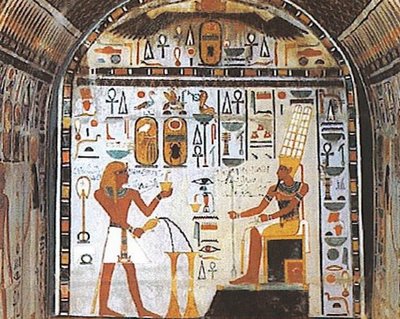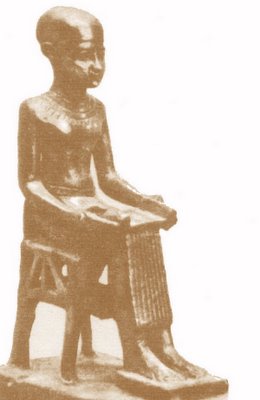

Click here: Professor Manu Ampim's research, and scroll down I visited Chicago recently and got a personal view of the new King Tut exhibit that has been touring the country. Surprisingly, there is no protest going on in that city like what was experienced in Los Angeles, during its exhibition.
As a whole, the exhibit was great. But at the exit was the Caucasian picture of King Tut that graces the cover of the June 2005 issue of National Geographic. It stood in stark contrast to what other guests and I had seen throughout the tour.
Frankly, whether intended or not, it was a signal for the Western world to continue its ubiquitous institutional-racism pogrom against Blacks. At the current pace of media on Black history, school textbooks and encyclopedias will still depict Rameses, Tutankhamen, Seti and all the pharaohs of old as sterile race-neutral historical figures.
Yes, it’s better than it was during my school days, but kids today are still confused on the issue, and that shouldn’t be so. An exhibit here in Minneapolis made news a few years ago when a Black kid on a class tour asked the tour guide if the ancient Egyptians were Black and the guide said, “no.”
Her parents were in an uproar, and rightfully so. No other history has been as maligned as that of Africans, and the affronts continue unmitigated today. The response of the tour officials in Minneapolis was that the guide had only responded with what he had been taught.
When Legrand Clegg, and other protesters in Los Angeles confronted the exhibitors in that city, the response of Terry Garcia, of the National Geographic Society was: "In this case we selected a medium skin tone, and we say, quite up front: 'This is mid-range.'" Mid-range from whose perspective is my question?
As an African American, it doesn’t take much analyzation to realize that the natural diffusion between Black classical cultures and Sub Sahara Africa was purposely thwarted to keep Black cultures at bay. It’s tantamount to separating the West from the “Golden Age of Greece, or Rome.”
Meanwhile, things are progressing on some fronts. While visiting New York last year at the Metropolitan Museum of Art (MET), I perused their exhibit on ancient Egypt and left with a resounding – Amen – it was the best exhibit I have seen to date in an American city.
Visit My Message Board




